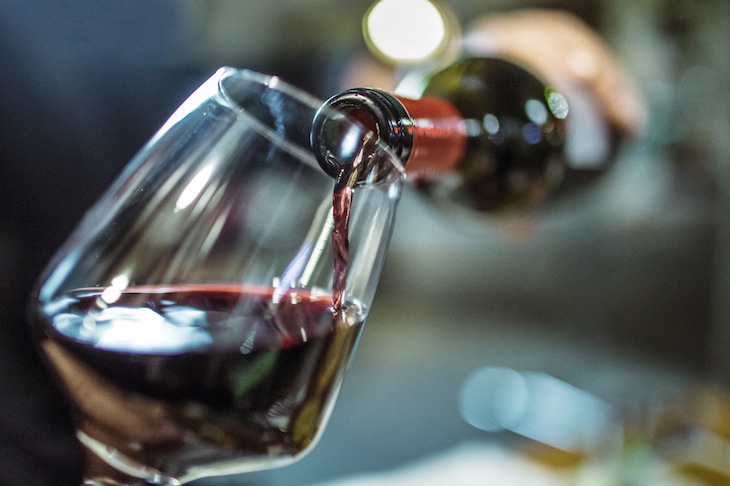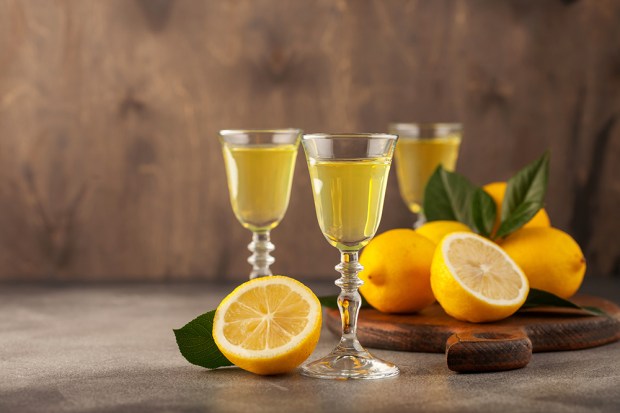I have been thinking about the Dark Ages. This has nothing to do with Theresa May or Jeremy Corbyn. A friend of mine, Chase Coffin-Roggeveen, has a doctoral thesis in mind about the increasing use of wine for liturgical purposes during the English Dark Ages. Like all scholars who address that period, he has to wrestle with slender sources. Those who do not leave documents tend to be written out of history: think of the Wends. There are revisionists, such as Sally Harvey, who contrast the surviving beauties of Saxon civilisation — consider the manuscripts — with the Normans’ brutality. There is an obvious three-hour essay question: ‘How dark were the Dark Ages?’
Chase is well qualified to address such topics. As his name might suggest, he has family links with Nantucket. Seagirt, sea-tossed, with none of the Lib-Dem meretriciousness of Martha’s Vineyard, Nantucket has a bleak ethos, wrested out of subsistence fishing, whaling and God. (At this point, a confession is called for. I find Moby-Dick unreadable. Per contra, I would claim ‘The Quaker Graveyard in Nantucket’ is the greatest American poem.)
But today’s Nantucket is not all austerity. Chase has been a sommelier in charge of a serious wine list. At a recent auction in Scotland, he bought some old bottles. He resold one, an 1860 Armagnac, which paid for all the rest, dating from the second European dark age. We started with two bottles of Mouton d’Armailhac 1929: the onset of the Great Depression, and a couple of years before the Rothschilds bought the château. One was hopeless: the other was still fighting against the dying of the light.
The same was true of a Cos d’Estournel ’34. Traditionally, Cos is as long-lived as any Bordeaux, with the exception of Latour. But there are limits. Although it was trying hard to cling on to taste-worthiness, we were in dementia-tax territory. Eric Mouillefarine, who served in the French marine corps and whose family has always seemed to find their way to the front line in France’s wars, serving under the Tricolour, but with the esprit of the Fleur-de-Lys, shook his head: ‘I do not understand the British taste. This is not oenophilia: it is necrophilia.’
One sees his point. Even so, there is a fascination in drinking wines that are older than oneself. That was especially true of the final bottle, which we enjoyed the next day. In 1943, France was still beset by darkness. Intrepid radio listeners might have heard about the Kursk salient or the invasion of Sicily, but the liberation of France must have seemed a long way off — while the finest French produce was still seized by the conqueror.
That was especially true in Champagne, which must have been particularly galling for the wine makers: the wine of joy plundered for the gullet of evil. The House of Pommery had invented Brut champagne, designed for the British palate, with unending success. By the depths of the war, it had become a favourite of Goering’s. Everything they bottled was supposed to be reserved for his consumption. But ways were found. In the spirit of Asterix and Obelix, subterfuges were devised to ensure the swastika did not take everything. A few bottles were concealed and we drank one of them. This was a 1a943 Pommery & Greno, by appointment to His Majesty King George VI, reserved for Great Britain and the Commonwealth.
As for taste, it clung to a few bubbles. But there was nothing remarkable. I might have identified it as an aged Palo Cortado: Eric, as a vin de paille. Yet that is not the point. Imagine the feelings — and fears — of the workers who smuggled it into concealment: the consequences if they had been caught. We were not just drinking aged and fading wine — we were drinking history. So we raised a toast to the France, to victory and to the heroes of the vineyard.
Got something to add? Join the discussion and comment below.
Get 10 issues for just $10
Subscribe to The Spectator Australia today for the next 10 magazine issues, plus full online access, for just $10.
You might disagree with half of it, but you’ll enjoy reading all of it. Try your first month for free, then just $2 a week for the remainder of your first year.















Comments
Don't miss out
Join the conversation with other Spectator Australia readers. Subscribe to leave a comment.
SUBSCRIBEAlready a subscriber? Log in